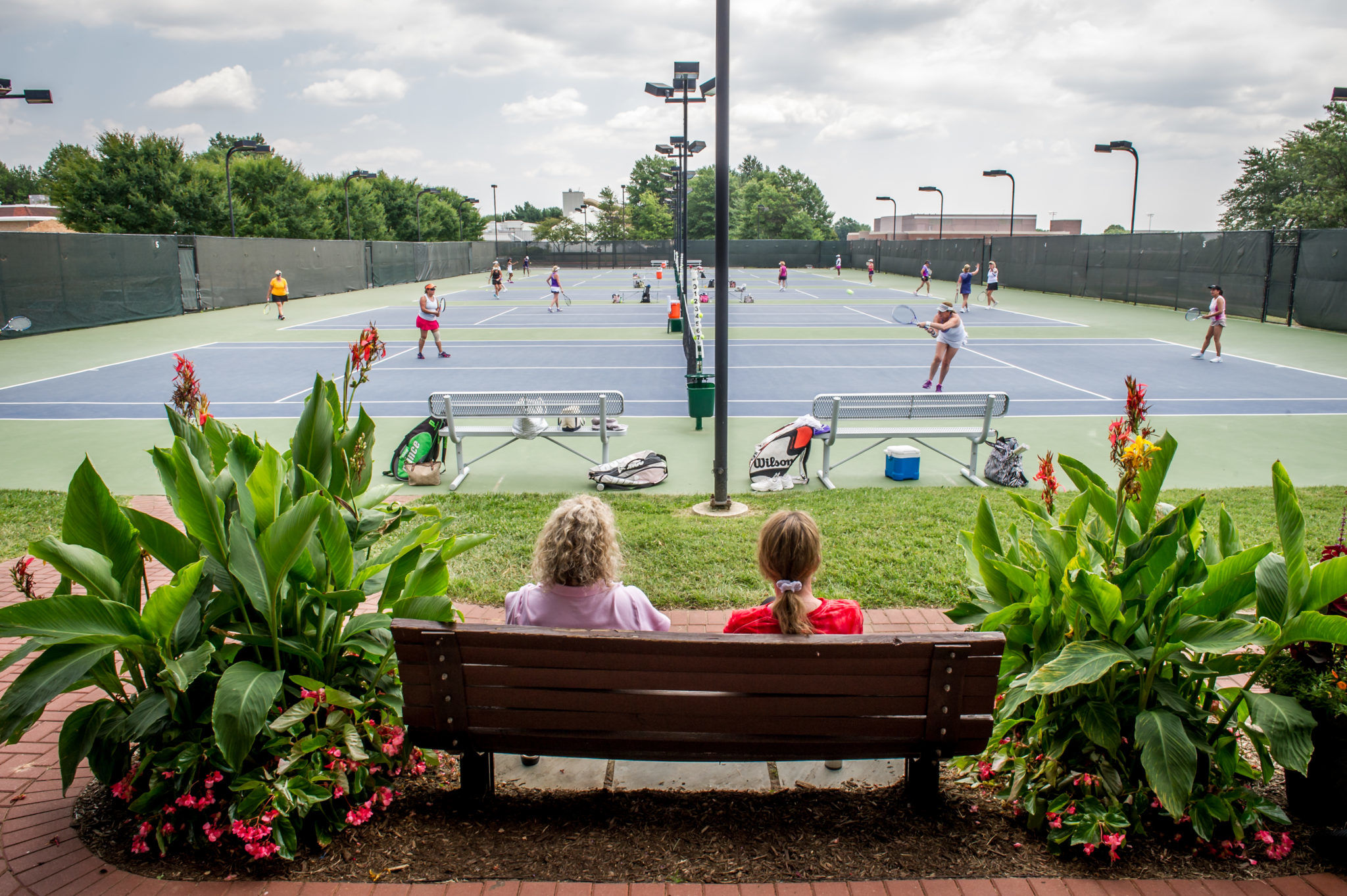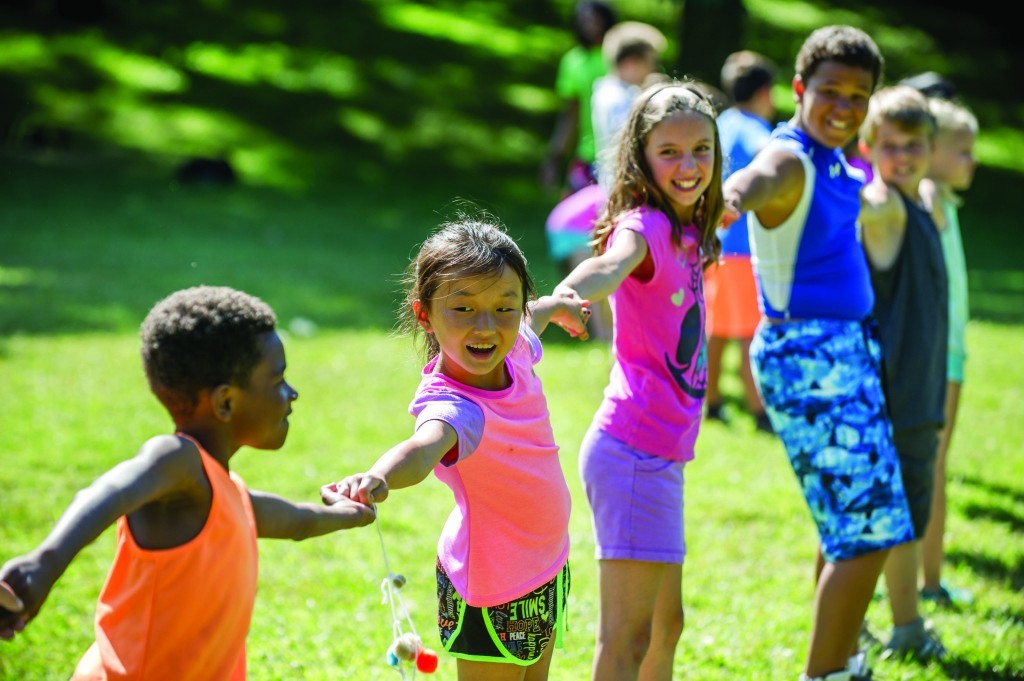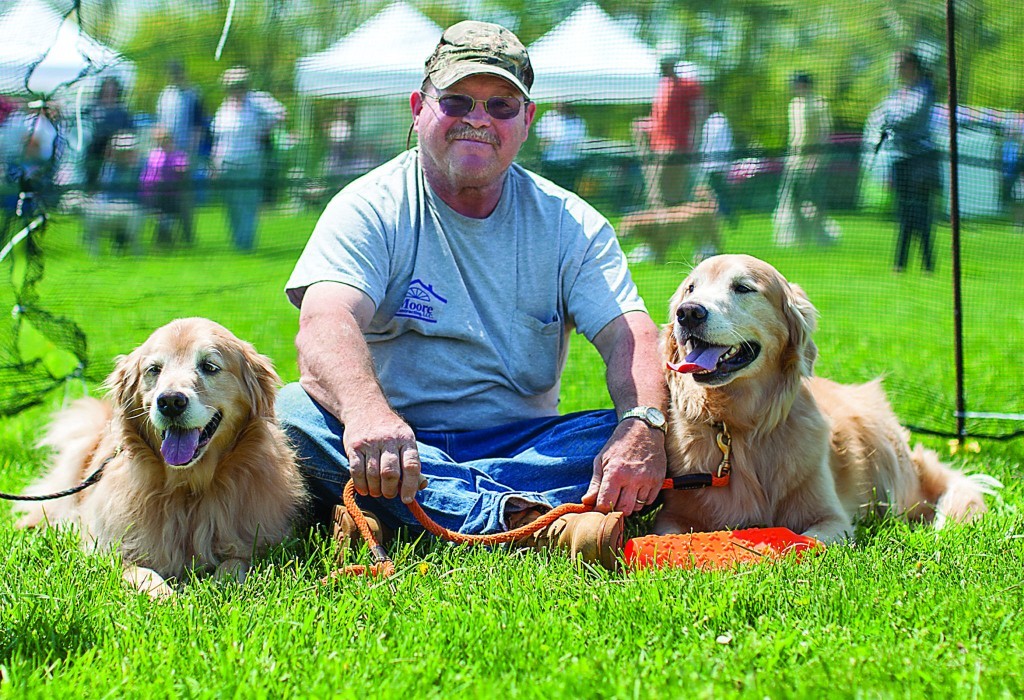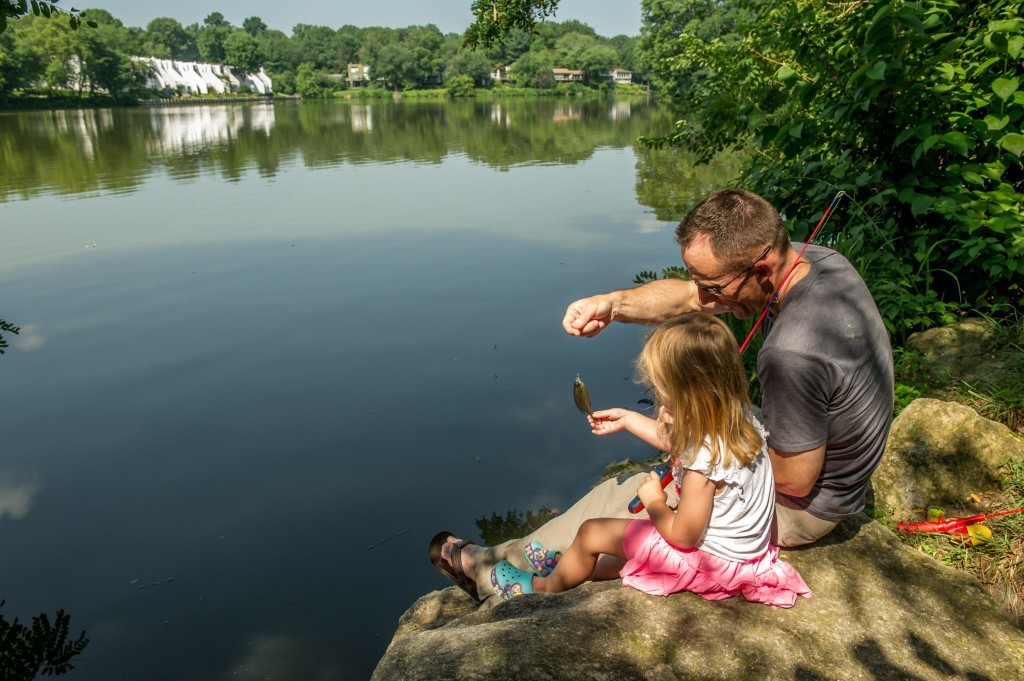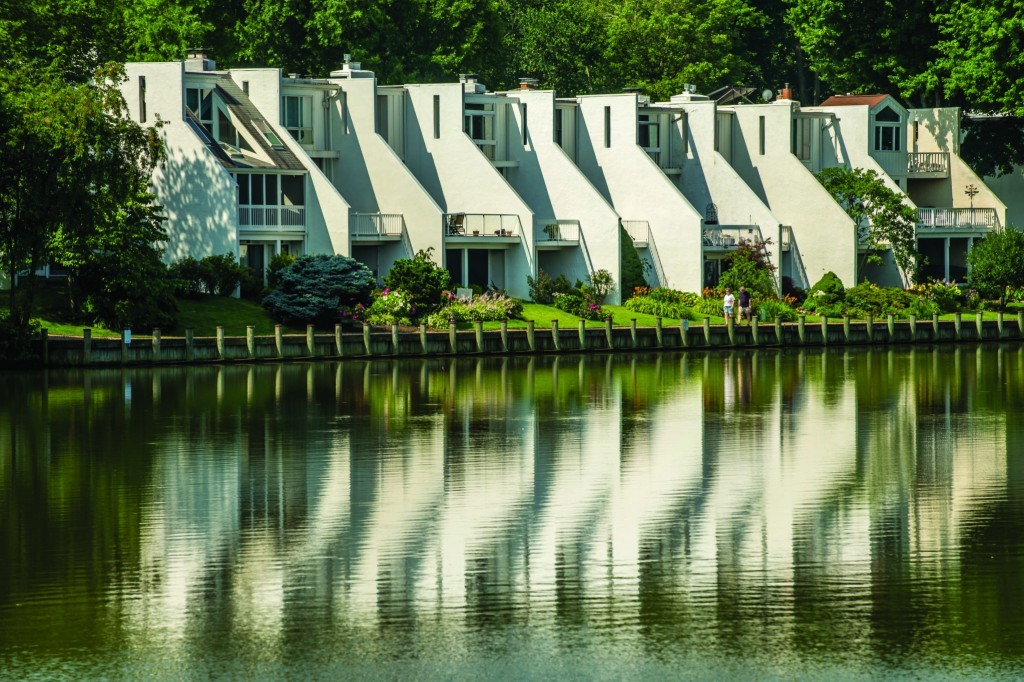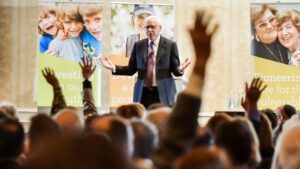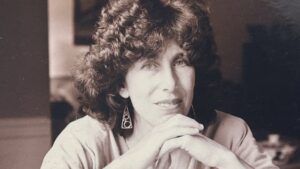When they moved their young family to Howard County in 1963, Baltimore natives Milton and Judy Kline were among about a dozen Jewish families in the area.
“Howard County was an ultra-conservative and backward county with no culture — and certainly no Jewish culture,” says Milton Kline.
He says he and his family never dreamed they’d ever become part of a thriving Jewish community there, much less someplace branded a “utopian experiment.”
Columbia and its Jewish community turn 50 this year. Named the “best place to live” in America last year by Money magazine, Columbia offers well-regarded schools, relatively affordable housing, community amenities such as shopping and recreational facilities, diversity and job opportunities.
But has Columbia lived up to its potential as a planned community and new utopia?
And how has its Jewish community of approximately 18,000 fared?
‘Easy and Fun’
Founded in the summer of 1967, Columbia was a planned city conceived by the late real estate developer, urban planner, civic activist and philanthropist James Rouse.
Rouse envisioned a community where residents of all races, faiths and socioeconomic classes could enjoy an exceptional quality of life. One way in which he strived for true integration was by designing villages with affordable and market-value housing side-by-side.
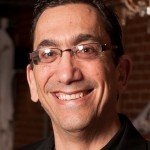
“That was visionary and it was executed seamlessly,” says Joshua Neiman, a real estate developer who spent much of his childhood in Columbia’s Village of Wilde Lake. “It was easy and fun to be a kid there. Each neighborhood had a village center and everything was an easy walk — the schools, pools. … There was a free public bus so as a kid, if I wanted to go to the ice skating rink, I could jump on the free bus and take it crosstown.”
Neiman’s mother, the late Judy Chayes, a single mother of four, moved to Columbia in 1968. Chayes relocated there from Atlanta, where she worked for the integration of public schools.
“She was drawn to the ideals of Columbia as an integrated community that embraced diversity,” says Neiman. In fact, Chayes was so committed to Rouse’s philosophy that she ended up staffing Columbia’s exhibition center, where she marketed the community to prospective residents.
The promise of diversity also drew Helen and Martin Ruther and their two young children to Columbia. Helen Ruther read about planned communities and was intrigued by the idea of living in such a place.
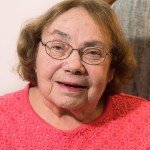
Though they valued the idea of living in an integrated city, the Ruthers didn’t want to abandon their Jewish identity. Since no established Jewish institutions existed in Columbia at the time, the Ruthers and other Jewish families needed to create them.
But Columbia’s founders had regulations regarding the construction of religious facilities.
“Just before the city of Columbia [was established], members of [Baltimore’s] Associated Jewish Charities met with 25 Jewish families and we were told that unless we became active in Rouse’s [planned] interfaith facilities, there would be no places for Jewish worship in the new city of Columbia,” recalls Milton Kline. “Fortunately, Bob Tennenbaum, a chief architect for Rouse, arranged to have a small room in the Wilde Lake Interfaith Building constructed for our use. That allowed for us to use the larger rooms [in the interfaith center] for Shabbat and High Holy Days. They needed us. Without the Jewish community, there would have been no interfaith centers.”
Helen Ruther recalls the community’s first Chanukah party. “It was really [held] in response to all the Christmas celebrations,” she says. “One of our members made a big wooden menorah. A friend walked in and said, ‘Oh, are all these people Jewish?’ It was so nice to have some recognition that we had a holiday, too!”
Growing Pains & Electric Prunes
The community’s first High Holiday services were held at Wilde Lake’s Slayton House in 1969. Community legend has it that someone decided to play a recording of Kol Nidre, the Yom Kippur prayer, by the Electric Prunes, a popular psychedelic rock band of the era.
That act of experimentation, recalls Ruther, proved to be a watershed moment for Columbia Jewry. “Some people said, ‘It’s time to separate,’” she says.
Ruther says that’s how the Reform Temple Isaiah and the Conservative Beth Shalom Congregation came into being.
As for the Ruthers, they helped found Columbia Jewish Congregation, which today is a Reconstructionist synagogue. “[The Electric Prunes rendition of Kol Nidre] was different,” Ruther says with a laugh. “It was not so bad. I was open to new ideas.”
In 1971, Rabbi Martin Siegel became CJC’s first spiritual leader. When he and his wife, Judith, moved from Long Island, N.Y., to Columbia, they felt like they had entered “the promised land,” the rabbi recalls.
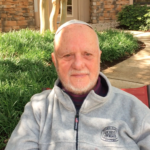
“It was like living in Berkeley [Calif.] during the ’60s and ’70s — open-minded, kind, creative, writing our own prayer book, very innovative,” says Rabbi Siegel, now 84. “There were also a fair number of educated knowledgeable Jews in the congregation, and that made it interesting.”
In the years that followed, the community grew quickly. By 1973, approximately 800 families were affiliated with Columbia’s Jewish community.
Jay and Ann Goldscher moved to Columbia in 1971. “I came from Baltimore, but that was unusual,” says Jay. “Most of us moved there from other places and we didn’t know each other. I don’t think there are many communities like that. The people who lived here, they may have grown up in Jewish communities, but they weren’t committed to those communities. Their commitment was here.”
The Goldschers chose Columbia for job proximity as well as its Aquarian values and ideals. “I was old enough to know that in Baltimore, integration meant when a white family couldn’t afford to move out,” says Jay. “We didn’t want that. …
“I think as we’ve grown, we’ve become less unique,” he says. “The first wave of us were idealists. The people who came later weren’t buying into the whole Rouse thing. They didn’t know about it.”
Branching Out
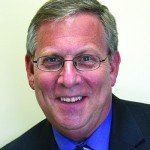
Though Goldscher calls the interfaith centers “a miracle — it was the only way we could have afforded space,” eventually he and others grew disenchanted with those setups. “Remember, we weren’t only sharing space with people of different faiths. We also shared the space with three Jewish congregations,” he says. “After a while, there were fights for space, identity. We weren’t walking in [to the interfaith centers] as members, we were more like tenants.”
To accommodate its growing congregation, Temple Isaiah moved to its own building in Fulton in 2004. “Now, when I walk in [to Temple Isaiah’s facility] I feel like I’m home,” says Goldscher.
In 1995, Beth Shalom Congregation built its own facility on the outskirts of Columbia. Ahavas Israel, a congregation affiliated with Lubavitch of Howard County, was built in 1989. CJC maintains Rouse’s interfaith model, sharing The Meeting House at Columbia’s Oakland Mills with fellow Jewish congregation Bet Aviv, Columbia Baptist Fellowship, Columbia United Christian Church and St. John the Evangelist Roman Catholic Church.
Likewise, congregations Kol Nefesh, Congregation Shalom Aleichem and the Calah Congregation hold services at Columbia’s interfaith Owen Brown Community Center. Bet Chaverim, meanwhile, holds services and programs in congregants’ homes
“[Columbia] is still a diverse community. We have a lot of contact between congregations,” says Helen Ruther. “There’s always a joint Thanksgiving service. … It gives everyone the experience of living together while people can still have their own religious organizations. I think that part worked. We had similar values and we became friends. I wouldn’t have had that opportunity anywhere else.”
Rabbi Siegel acknowledges that today’s Columbia is not so different from other prosperous suburbs across America.
“No innovative program can last forever. Things change,” he says. “But I wouldn’t trade it. We brought together a wonderfully creative community of Jews. My original friends are still my friends. We were founded as a congregation, but became a community.”
Photos courtesy of the Columbia Association
Also see:

